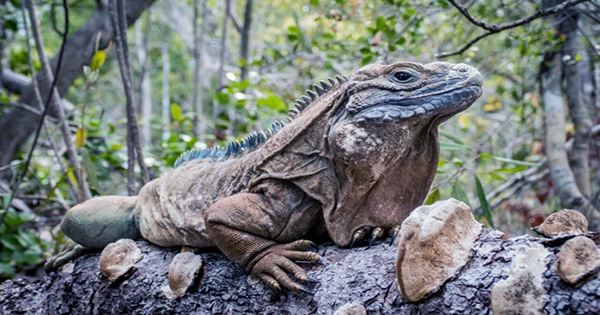Reptiles are among the oldest animals in the world, but their survival is in jeopardy, according to new research that found that 21% of them are now threatened with extinction. Only 1,829 of the 10,196 reptile species examined were deemed to be vulnerable, endangered, or severely endangered. The research authors write in Nature that 40.7 percent of amphibians, 25.4 percent of mammals, and 13.6 percent of birds are now endangered with extinction, but that the threat to reptiles has been largely ignored by prior estimates.
Dr. Bruce Young, one of the study’s authors, told the BBC that “reptiles are not charismatic to many people, and there’s been a lot more attention on more fuzzy, feathered species of vertebrates for conservation.” The researchers spent 15 years undertaking the world’s first comprehensive extinction-risk assessment for reptile species to fill this information gap. According to the findings, 57.9% of turtles and 50% of crocodiles are now endangered, as are 19.6% of squamates (a reptile group that includes lizards and snakes).
Within the squamates, 73.8 percent of iguanids are on the verge of extinction. Overall, forest-dwelling reptiles are more endangered than those located in desert environments, with agriculture, logging, and urban expansion being the primary drivers of reptilian extinction. “Land preservation is crucially necessary to buffer many vulnerable species from the simultaneous dangers of agricultural operations and urban expansion,” write the authors, “among the conservation methods needed to prevent reptile extinction.” “In addition, introduced mammals endanger 257 reptile species on islands (2.8 percent of all reptiles), necessitating ongoing initiatives to eliminate introduced mammals in those areas.”
The researchers also point out that the pet trade poses a threat to turtles, while hunting has an influence on crocodile populations. Climate change, unsurprisingly, has an impact on reptiles’ fortunes, as thermally feasible foraging windows decrease and sex ratios in species with temperature-dependent sex determination become skewed. While such existential risks affect reptiles all over the world, those in Southeast Asia, West Africa, northern Madagascar, the northern Andes, and the Caribbean are now at the greatest risk.
Conservation activities targeted at saving endangered mammals, birds, and amphibians, according to the researchers, are likely to help reptiles that share their habitat with these species. They do, however, warn out that 31 threatened reptiles have ranges that do not overlap with any other endangered species, emphasizing the necessity for “immediate, focused action” to safeguard these delicate creatures. The authors demonstrate the gravity of the problem by revealing that if all of the vulnerable reptile species go extinct, a total of 15.6 billion years of genetic diversity will be lost permanently on the planet.











